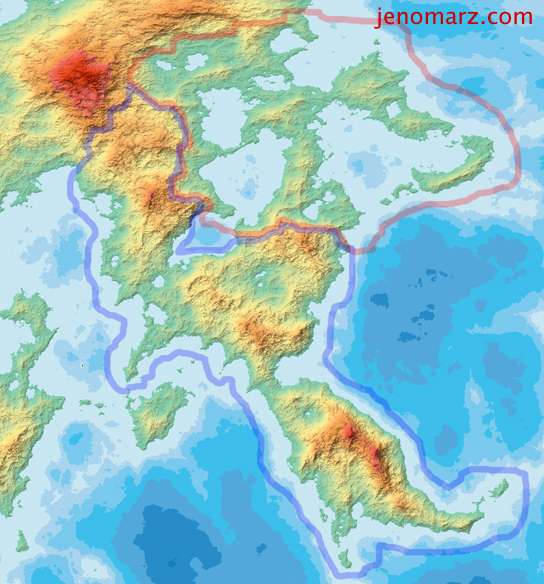I’ve entered the final stage of writing my trilogy, with 60k planned for the third story part. When I’m done, I’m moving onto my novel, Rjg. (One might argue that 60k is a novel-sized story—well, no. Not in this case. The trilogy follows a strange pattern of 26, 42, and now ~60k words.)
I know I won’t be writing series for a while after that, those are quite troublesome in the sense they tend to drag on and I’m not much of a multitasker—I barely have enough energy to wake up and I write slowly. I also want to play with my atmosphere models and stand-alone stories. And yes, I need a MITgcm model for the novel in question. An alien panet is a fascinating thing to design and summer is the perfect time to let your computer do the long math while you play outside. The tricky part here is the alien topography.
MIT General Circulation Model is a numerical model designed for study of the atmosphere, ocean, and climate. It has the ability to simulate, using one basic algorithm, both atmospheric and oceanographic flows at both small and large scales. Its adjoint capability enables it to be applied to parameter and state estimation problems. The non-hydrostatic capability allows the model to simulate overturning and mixing processes. When used in conjunction with the finite volume representation of topography (known as shaved-cells or partial steps using the method of cut cells) the model provides a flexible tool for studying mixing process and dynamical interactions with steep topography.
As a bonus, I have plenty of time to think about the novel’s cover—it’s science fiction, but it’s not set in space, though still being a part of the same universe in which Falaha’s story takes place.
I drew some maps for Rjg before and they need more work.
This is the world the story will take place in, one of the continents of planet Dannan, during the period of its early civilizations.
The blue line marks the habitat of the semi-nomadic Danna, and the red line encompasses the Ynu Empire. Both humanoid species and their multiple nations are not very friendly towards each other, hence the clash of the cultures, resulting of one big, bad war.
Another tricky part with the model? The planet is on its side; it behaves differently from Earth, and even from planets with more moderate obliquity. I’ve already built the planetary system and evolved it for some time to see its dynamics and stability. I will probably tell more about it in the future posts.
After modeling the location might change, so it’s important. Currently the place lies somewhere between the equator and 50 degrees latitude, but I need to know more about climate and atmosphere and ocean for the plot and for each culture’s history and development, and also for sketching out flora and fauna. I know I need more than one model–everything is dynamic and changed while both species evolved into what they are now. But it would be too time-consuming, so I will have to imagine some things based on one model that captures the current state of the world in question. (Tho, depending on how much time it will take, I might end up building more than one model after all.)
From geological standpoint another interesting part of the worldbuilding here is that the story is set during the time when our universe is only ~11 billion years old, and that planet, of course, is much, much older than 3 billion years.
There, so many things to play with, so many words to write!


I love your dedication to accurate worldbuilding, and your passion for science. Though I wouldn’t go to such lengths with my own research, I still think that it’s part of what makes a story come to life. Especially if the elements you come up with play an actual role in the unfolding of story events. 🙂
Thanks Vero! 🙂
Well, I’m dealing with an alien world which has no connection to Earth and humans in any way. I’m not writing fantasy, so if I have the means to produce accurate setting, I would go for it. I need to know the physics of the planet to design and play with their early technology realistically. I also need seasonal wind map and (seasonal) ocean current map, even the most basic ones, so I don’t know yet how much resources my model will consume.
It’s quite an interesting experience, and if something good comes out of this, I might even write a science paper about the model. It would be a great asset for astrobio folks. So far I’ve seen only simplified model that is similar in idea to mine, but without any topography. Thanks to it I could develop a basic sketch of my planet. But beyond that everything is a wild guess.